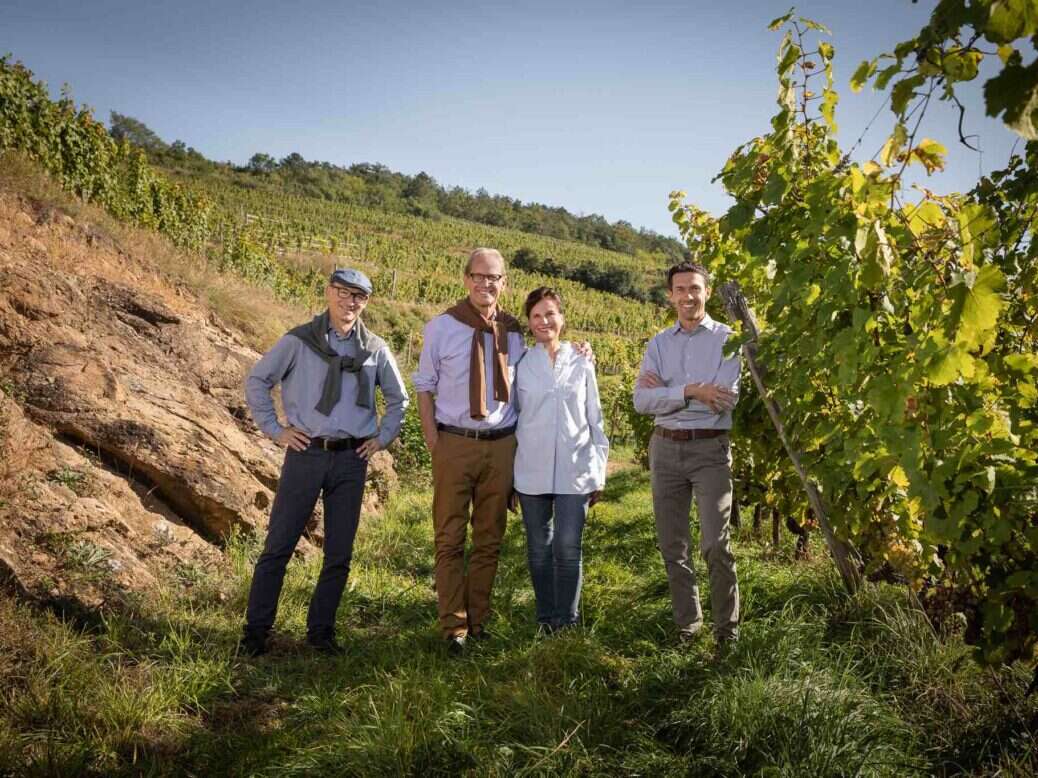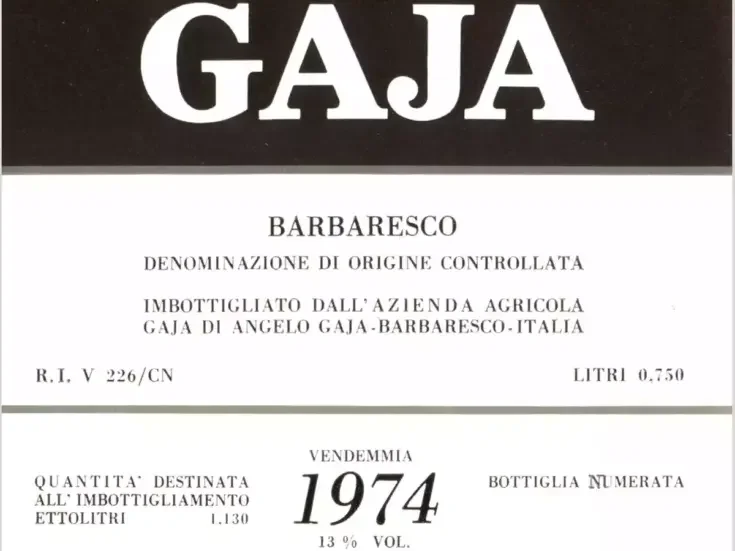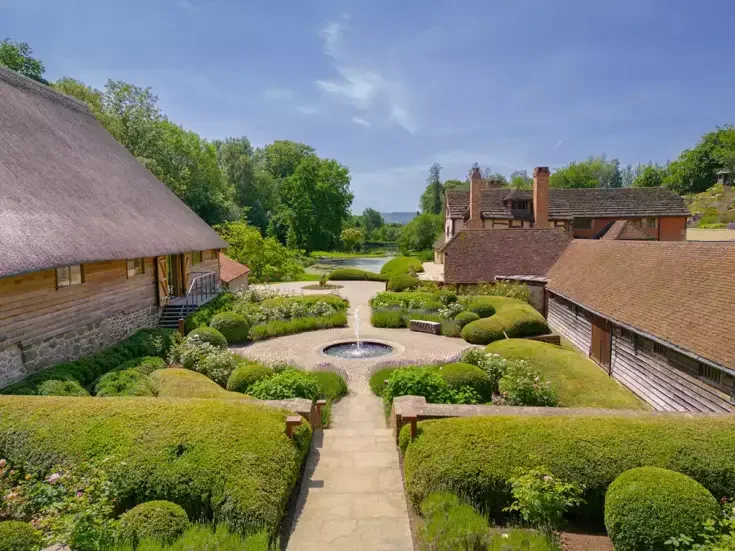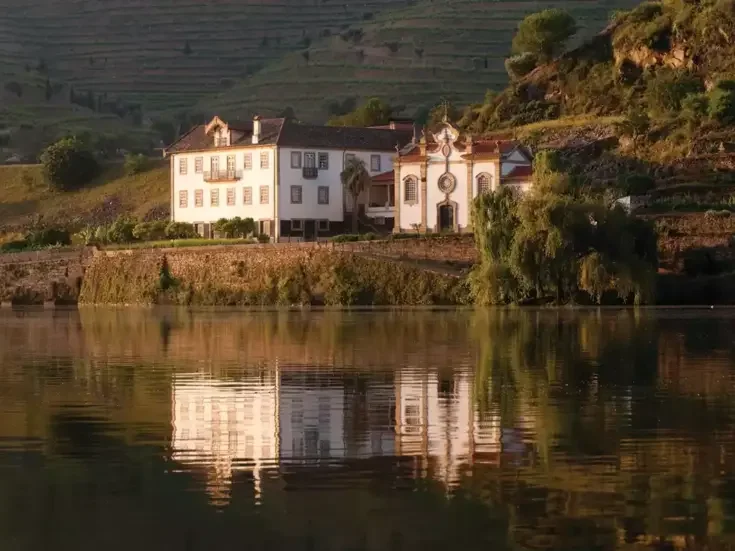
In the latest of his in-depth explorations of the ranges of some of his favorite producers, Terry Theise explores the new releases from Weingut Bründlmayer, an historic, “classic” estate based in Langenlois in Austria’s Kamptal region that has moved forward “inexorably” in recent years under the guidance of Willi Bründlmayer and his team.
Theise begins with his notes on Bründlmayer’s collection of red and sparkling wines, before continuing tomorrow with Bründlmayer’s Grüner Veltliners and concluding on Thursday with the estate’s Rieslings.
The estate Weingut Bründlmayer is less a large winery than a sort of agglomeration of small wineries linked together under a capacious umbrella. Thus we have the red-wine estate, the sparkling-wine estate, the “classic” estate (Riesling and Grüner Veltliner) and the “other” estate (Chardonnay and the Pinots) acting as semi-autonomous fiefdoms under the guidance of an organizing principle—that being Willi Bründlmayer himself. This doesn’t work without a talented team, which entails both individual talents and the talent of working seamlessly together.
It isn’t hard to fathom marvelous quality from a little bijou winery with the wherewithal to lavish attention. Indeed we rejoice in such producers and the miraculous wines they send us. I realize that to some people, Bründlmayer’s 80-something hectares (198 acres) would count as a small estate, but from my happily skewed perspective it looks … sizable. All the more beautiful, then, the sustained level of excellence they are achieving in the past eight to 10 years. But “excellence” doesn’t quite suffice to describe it.
You have the superb qualities of this wine and that one, but you also have what accumulates when you look at the production as a whole. This production is improving in countless small, smart steps, so that you can’t really say “This thing happened and our quality really catapulted forward … ” but instead you see an ongoing process of refinement, that has urged the estate forward inexorably, from what was often considered a “classic” (but maybe not terribly interesting) estate to something that now claims your attention with almost every wine.
Bründlmayer’s red wines

2018 Zweigelt
“Classic” varietal aromas in the black-cherry Blaufränkisch direction. You could almost believe it was a cuvée of Petit Verdot and Syrah. Willi’s Zweigelt has always been silky and delineated, on the peppery side, not as chummy and ingratiating as some intro-to-Zweigelt wines can be. And curiously, it feels more pensive and lapidary from the Jancis glass, and more overt from the Spiegelau “red wine.”
This wine has always seemed like Zweigelt in a tuxedo to me, yet it rocks the suit and doesn’t feel at all awkward. There’s tannin but fine-grained, fruit but not gushing fruit, violets, iron, and Tasmanian pepper but everything measured and articulate. This is admirably classy for the “basic” level. It’s worth asking how classy we want the basic level to be, but there are plenty of snugglesome Zweigelts out there and it would be out of character for Willi to produce one. Yet it leaves unanswered the question: what is this wine’s purpose?
There is also a Reserve-quality bottling, which I wasn’t sent to taste.
My second look is three days later, the bottles untouched in the interim, and this time from the Jancis and the MacNeil “Creamy & Silky” (for the first time). That glass really caresses the wine aromatically, but (atypically) it either suppresses the fruit or the fruit suppressed itself in the open bottle. In the Jancis it’s perhaps less “pensive” than it is calmly articulate, and it reveals a slinky and bewitching juiciness on the finish, like liquid rippling peppercorns. You get the lamb chop and the mint sauce in this guy.
2017 Pinot Noir (Blauburgunder)
(Appellation “Niederösterreich, as the variety is disqualified from the Kamptal “DAC.” Alc 12/5%. It’s made from the ripest grapes in two sites, Dechant and Käferberg)
The color is limpid and unaffected. Aromas are a little funky at first, and some wood-char slips out (two-to-three-year-old Austrian-wood barriques were used) After a minute or two it starts to exhale the pretty profile of PN, and the palate shows the fine-point articulation we find in many Bründlmayer reds.
Some years ago the winery recognized internally that the reds, while good, were the weak link in the assortment, and steps were taken to bring them up to the prevailing (and elite) level, which included hiring a cellarmaster who’d be responsible for the reds alone. This is the finest regular PN I’ve ever tasted from here, but it’s more cerebral than sensual—70-30, we might say. It wants to be attended to, thought about, not so much to be loved as appreciated. Which I very much do. It’s an attractive and grammatical wine, without a Burgundy cognate though with a classical profile. You feel smarter while you drink it.
And I must say I like it best from a glass that suppresses the articulation and brings the fruit out front. You may not agree. I like the suavity of the more analog glass, and I think this quality will come forward over the next few days.
Second look, again three days later, and again with the MacNeil stem in the mix; as I suspected this wine is wildly more aromatic now, from either glass. It’s charmingly dusty from MacNeil and refined, salty, and delineated from Jancis—but this time with its fruit on full display. Introverted but not aloof, this is wine in the form of sitting with a good book and the cat in your lap, purring.
I am also noticing a fragrance that’s very close to the smell of the leaves on our cherry-tomato plant. It’s a most particular aroma, and it’s present in the wine.
2017 Pinot Noir Reserve +
(The back label says “unfiltered,” and reserve Langenloiser Käferberg, which is better known for its full-throttle Grüner Veltliners.)
The color is a charming youthful ruby; it looks younger than the regular PN. Fragrances, naturally, are richer and more interior, at least when first poured. I’m deliberately not looking at the vinification info (or other fact sheets).
What this is, is simply beautiful wine.
It’s a rapture of civility, or a civilized rapture; it offers every facet of loveliness without ever clamoring or “stunning” or knocking you out.
Flavors play in so many fields it’s daunting to list them. Mushrooms run to butter-boletes, really fresh morels. Savories display the usual sandalwood, cardamom, summer truffle, and tomato concentrate. There’s a high-toned floral I can’t name. It has the shimmery length we anticipate from “serious” wines, but the finish is not at all serious; it is ridiculously marvelous. I have a memory-flash of some d’Angerville Volnays I drank now and again.
The estate’s description refers to notes of “asparagus and verbena.” Ummm … okay. I have some dried verbena leaves (from our own garden) at hand, and (sniff-sniff) I’m not getting it. But okay, there’s often something shrieky-green as a kind of stratosphere of aroma atop many Pinot Noirs, so I’ll make peace with verbena as poetic (or cannabic) license. Asparagus, not so much.
There’s more new wood here but paradoxically it shows less. What we have here is a wine of pure beauty and serenity, happy in its own gleaming skin, endlessly complex but not assertive, adult but not haughty, lucid but never clamorous, just wave upon silky wave of class and poise.
On second look, again three days later, the color has deepened, as PN often does. The wine is elegantly proportioned, though the MacNeil makes it seem overtly woody. It’s spirit-kin to Dautel’s Erstes Gewächs—high praise. It’s unlikely to stand out at “tastings” but believe me, it’s a wine that almost palpably respects you.
Bründlmayer sparkling wines
Austria’s first producer of serious sparkling wine—for many years now—has only improved of late. I can recall as a merchant searching for the “next big thing” in Austro-fizz production, being reminded that I already had the top grower. The number of cuvées continues to grow.
Brut Nature Blanc de Blancs 2017
(It says “Vintage” on the capsule. Deg 13 April 2021; it’s all Chardonnay from the calcerous sites Spiegel and Steinberg.)
Enticing aromas remind me a little of Chiquet’s Blanc d’Aÿ. The palate “reads” this as sweeter than it actually is. In fact this is more successful than 99% of the Champagnes bottled as Brut Nature, and other than a little post-disgorgement rasp I am nothing but delighted with it.
Flavors run to straw and hay and warmed cracker dough, with nuances of Chardonnay apple and citrus; it has the ripe “sweetness” of really good Meunier Champagne (and I may well have guessed Moussé if I’d tasted it blind) along with a superb generosity, thrilling balance, and a beaming welcoming personality. It took all my willpower to spit it.
Yet this first impression wasn’t quite borne out with subsequent encounters.
Tasted again two days later, it seems drier now, more stern. Still finely balanced but the rope is more tautly pulled. Here’s a difference: on day one I tasted this after the three reds, and today it’s my first sip of wine. When I taste it again I’ll repeat the sequence of reds first. These things matter, they weigh upon “palate” and are the reason I’m wary of scores that assign absolute value.
Extra Brut (Reserve) +
(deg 9/2019)
PN/CH blend now; I am not seeing the contributing vintages but I am smelling something that’s either oxidation or else an element of PN. The wine, which I have always liked, is highly suave and vinous, perhaps a little advanced for barely two years on the cork but a pleasure to drink right now. The estate’s fact sheet refers to “hazelnut [which I get], honeysuckle [which is plausible], and heliotrope [which smell I do not know]” to which I might add jasmine rice, talc and malt, and maybe a hint of ginger, but all this language has me scratching at the door for associations.
There’s a curious high brightness that enters the finish in a most bewitching way. We are also the teensiest bit astringent. Still, it’s a lovable wine to drink tonight—not that I will, but you should—and the other thing that strikes me is, there is nothing especially Austrian about these, which is neither good nor bad but does offer us things to think about. Meanwhile this wine just gets yummier (and fresher) as the glass empties.
Taste #2 is again succulently textured and aided by its subtle oxidation. It’s like donuts in the deep fryer! His majesty is like a cream donut. This particular wine feels like a good Sezannais Champagne; in fact probably better than anything actually made there. Sitting in the glass it starts to waft aromas of gougères and Reggiano. The wine is classy and cordial, and one is well pleased.
Blanc de Blancs Extra Brut (Reserve) +
(Deg 23 Feb 2021—which they have hand written on the back label because they knew I’d ask—bless them. 100% CH, with 3 years of tirage.)
Now we have disgorgement aromas, which is to say a certain steely brutality. This lasted maybe five minutes and then went ape-shit with loveliness.
Fascinatingly, the palate is just roaring along. The mingy few grams of RS are massively helpful, encouraging a fine angularity that sets up a visceral dialogue among many elements, partly cressy, partly tart-berries, partly pink peppercorns, partly osmanthus, partly cake frosting, partly wintergreen and mint.
I think it’s both lovely and wise to make sparkling wine out of what would have been rather ordinary Chardonnay as a still wine. Because these are remarkable beings; this one has fragrances I associate with certain 1er Cru Chablis (Vaillon for instance). Compared to Gobelsburg’s, these are rather white-linen, but nothing wrong with that!
Second tasting, as a palate-control check since I seemed cranky toward the other bubblies I tasted on day two. This is still zingy and good, really vibrating, frisky; the flavors seem to ripple on currents of sheet-metal brightness, and that tautness is supported by a persistently angular and delicious meld of fruits and savories. And on third look it has only improved. Complex, animated, quivering, and just plain tasty. My money’s on this, and the Rosé. And you know, excellence has a very particular flavor, distinct from other flavors we find to be “good” or “very good,” and this wine is loaded with excellence. I’ll be forlorn to see this bottle emptied.
Brut (Reserve)
(deg 8/2020, typically 18 months tirage, and a real cuvée of PN/CH/P-Blanc/P-Gris and Grüner Veltliner.)
This one wanted to be poured; it foamed mightily over the lip of the (fridge-cold) bottle, and now the whole room smells like Bründlmayer Brut. Nothing wrong with that! For many years this was the only fizz from this estate, and now it’s the flagship, and I don’t know whether the presence of GV in the blend makes it taste more “Austrian,” but for some reason it does. Nothing wrong with that either. Curiously the expression of the blend seems to suggest a variety not actually present—Welschriesling.
Readers who own both this and the Gobelsburg Brut should have them side by side. Each is impeccably polished and there’s a distinct family resemblance, but they play in different keys. Put another way, Gobelsburg’s is more silvery/green and Bründmayer’s is more tan and grainy. Flavors run to malt and orange blossom, and there’s a yum factor thanks to the (inconspicuous but useful) dosage.
A year on the cork ought to have mitigated a certain rasp, making me think a longer tirage might be helpful. As I recall this was disgorged “as-needed” so it’s possible there are later disgorgements of this assemblage, lot 8819/17. Below the fruit and savor there’s a tautness that seems to stand in for chalk. It’s just this side of bracing. There’s a lot of charm in the fragrance, and the palate’s innate geniality is obtruded upon by a subsequent stiffness. We’ll see how it does over the days.
The second encounter is generally more comely. I mean, the wine is plain tasty, and yet for all its polish you wouldn’t hate yourself if you drank it with a Schnitzel (or in my case, three Schnitzels) or with fries dipped in mayonnaise, which is how any decently civilized person should eat fries. Also note the meyer-lemon and passion fruit notes in the finish. The “stiffness” is all gone now, and the wine is lavish and charming.
It occurs to me to observe, if Bründlmayer made only sparkling wines, they’d be worthy of the greatest attention and acclaim. When you consider everything else they do, you have to place them alongside Zind-Humbrecht (among others) for sustained superlative performance over a wide range.
2015 Blanc de Noirs Extra Brut “Grosse Reserve”
(deg 18 January 2021, all PN from a vineyard attached to the Loiseum hotel complex; it’s a coeur-de-cuvée, barely three years en tirage)
The aromas are those of earnest, avuncular Pinot Noir. The “dark” elements. The palate is almost adamant, but not quite. Call it stern. It’s a table-thumper that stands out from the range. It has power and torque, but on first pass it doesn’t have much generosity. I “see” the associations they cite on their web page, but this bottle is honestly kind of leaden.
It could be me, though I have done the usual preparation for tasting. The weather’s close to yesterday’s. I’ll re-taste one of the bottles I loved yesterday, just to see. Like all Bründlmayer wines there is a palpable intelligence behind it. They know what they want to do, and do it. The -x-factor, as always, is the bottle itself, not the literal glass container, but the caprice of the particular object. I’ve said how much I like tasting alone, but now I wish Willi (or Thomas or Andreas) were here so I could ask, Is this the wine you know, and is it how you want the wine to present?
A densely embedded salty kind of dark fruit wants to squirm to the surface, but someone left the door locked. Do consider this a provisional impression, as I’ll taste at least another 3-4 times.
On second glance it is both the same and different. It makes better “sense” this time, though it does like to pound the table to make its point. It is no longer “leaden” but it’s still maybe a bit obtuse. I can almost eavesdrop on the thinking … the wine has so much body and weight that it will take a very low dosage, and this is plausible in theory. And to be fair, the wine is “balanced.” But it would have been much more delicious with another gram or two—not more—of RS.
The question of what it “needs” is the wrong question, though it is often the only one asked. The better question is: how will it taste? And so this fine, interesting wine is something of a missed opportunity. Let’s see if that opinion holds the next time I taste it!
Indeed, it did.
Brut Rosé (Reserve) ++
(deg 9/2020, alc only 11.5%, it’s PN/Zweigelt/St Laurent, but the more assertive Zweigelt is used for the still Rosé; this again is only free-run juice, 18-24 months tirage for this lot # 8984/04/18)
The color of farm-raised salmon (paler than before) leads into a strikingly enticing fragrance; I mean, it’s all the “usual” fruits and berries but they’ve all taken molly or something, because they’re just exhaling love and joy. And delicacy! The voice of the wine is cool and silky and you have to bend your ear a little to hear it.
Doubtless there are more grandiose rosés in Champagne; I know there are, I shipped many of them. But there are none more refined or exquisite than this. The (old) Margaine rosés could breathe the flute-breath like this does, but not with the wicked little earthy twang of the St-Laurent or the aloe vera and wisteria from the Zweigelt.
Some years ago I was selling this wine to somms who responded to its delicious oddness. It has changed since then. Now it talks to quietude and divinity. It’s nothing except beautiful. Willi Bründlmayer and his team have many monuments to be proud of. I tasted the Veltliners yesterday and will start tasting the Rieslings in a few minutes. But I hope in my heart that they pause, at least once, before this wine, and are thankful for their vision and skill, and for the many mysteries the gods keep to themselves.
Consider me melted.
For more of Theise’s thoughts on Bründlmayer’s latest releases, click here for the Grüner Veltliners and here for the Rieslings and sweet wines.
A note on scores by Terry Theise
I disapprove of points. I don’t recognize measuring wines against a notion of “perfection,” I think it’s a fool’s errand to assign absolute value to an ephemeral impression, and the more precise a scoring system purports to be, the more it actually misleads.
That said, my mind forms hierarchies of its own volition, and special wines warrant special attention. So I’ll revert to my deliberately inexact system of plusses—one, two, or three—to recognize the most remarkable wines. My plusses are sort of like Michelin stars. One plus is a wine that stood out. Two plusses is a wine that made me stop and consider the depth of its beauty. Three plusses is a wine that tingles with greatness, and offers a moment of profundity. Feel free to superimpose whatever scoring system you deploy; the point-systems are harmful but the folks who use them aren’t evil, so if you want to conflate my three plusses with a scoring range that makes sense to you, be my guest.
Extracted with permission from Terry Theise’s Tasting Protocols.







